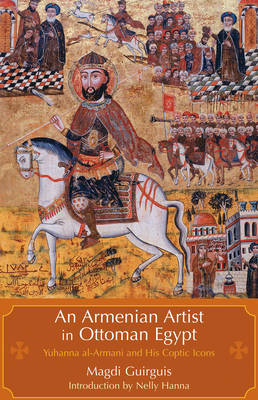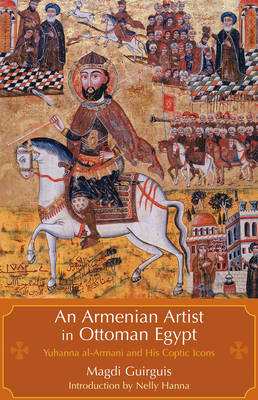
- Afhalen na 1 uur in een winkel met voorraad
- Gratis thuislevering in België vanaf € 30
- Ruim aanbod met 7 miljoen producten
- Afhalen na 1 uur in een winkel met voorraad
- Gratis thuislevering in België vanaf € 30
- Ruim aanbod met 7 miljoen producten
An Armenian Artist in Ottoman Egypt
Yuhanna Al-Armani and His Coptic Icons
Magdi GuirguisOmschrijving
Yuhanna al-Armani has long been known by historians of Coptic art as an eighteenth-century Armenian icon painter who lived and worked in Ottoman Cairo. Here for the first time is an account of his life that looks beyond his artistic production to place him firmly in the social, political, and economic milieu in which he moved and the confluence of interests that allowed him to flourish as a painter.
Who was Yuhanna al-Armani? What was his network of relationships? How does this shed light on the contacts between Cairo's Coptic and Armenian communities in the eighteenth century? Why was there so much demand for his work at that particular time? And how did a member of Cairo's then relatively modest Armenian community reach such heights of artistic and creative endeavor? Drawing on eighteenth-century deeds relating to al-Armani and other members of his social network recorded in the registers of the Ottoman courts, Magdi Guirguis offers a fascinating glimpse into the ways of life of urban dwellers in eighteenth-century Cairo, at a time when a civilian elite had reached a high level of prominence and wealth. Illustrated with 28 full-color reproductions of al-Armani's icons, An Armenian Artist in Ottoman Egypt is a rich and compelling window on Cairene social history that will interest students and scholars of art history, Coptic studies, or Ottoman history.
Specificaties
Betrokkenen
- Auteur(s):
- Uitgeverij:
Inhoud
- Aantal bladzijden:
- 144
- Taal:
- Engels
Eigenschappen
- Productcode (EAN):
- 9789774161520
- Verschijningsdatum:
- 15/04/2008
- Uitvoering:
- Hardcover
- Formaat:
- Genaaid
- Afmetingen:
- 155 mm x 236 mm
- Gewicht:
- 498 g

Alleen bij Standaard Boekhandel
Beoordelingen
We publiceren alleen reviews die voldoen aan de voorwaarden voor reviews. Bekijk onze voorwaarden voor reviews.











